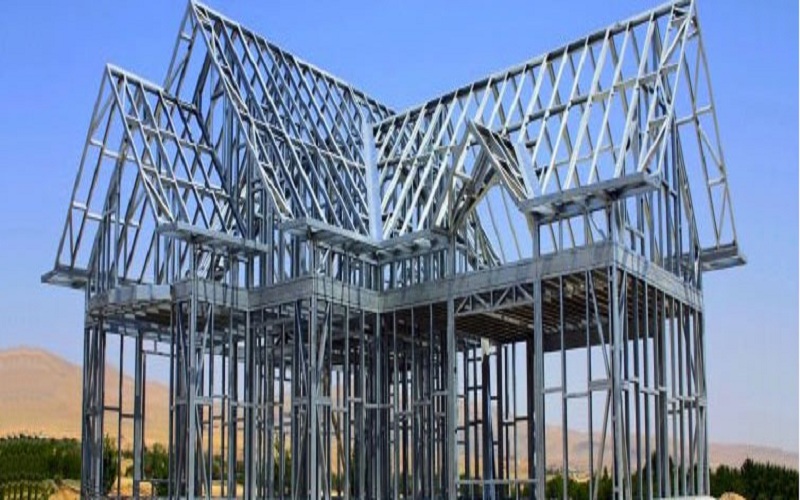The steel estimating and steel takeoff are critical processes in the construction industry. With complex building projects requiring thousands of tons of structural steel, accurate estimates are essential for controlling costs. This is where steel takeoff systems can provide major advantages over traditional takeoff methods. In this article, we will explore the key benefits of using advanced steel takeoff software for estimating projects.
Steel takeoff and estimating were traditionally manual processes. Estimators worked with paper blueprints, scales, colored pencils, and calculators. This method was extremely slow, tedious, and error-prone. However, modern steel takeoff systems automate these processes using building information modeling (BIM) and other technologies. Read on to learn how steel takeoff software delivers major advantages over old-fashioned takeoff methods.
Accelerated Takeoff Speed
One of the biggest benefits of steel takeoff systems is that they drastically accelerate takeoff speed. Manual takeoff involves physically measuring each steel member on paper drawings. This must be done individually for every beam, column, angle, and bolt. On a large industrial or commercial building, takeoff could take weeks or months.
Steel Takeoff Software, however, uses digital drawings. Once these are loaded into the system, it can identify all steel members and quantities automatically. Advanced algorithms analyze the model geometries, detect all steel shapes, and instantly generate detailed takeoffs. This reduces the overall takeoff time to just a few hours or days.
Faster takeoff speed allows estimators to handle more projects. It also enables them to perform value engineering and explore different design scenarios during preconstruction. Accelerated takeoff gives teams more flexibility to win more work and optimize costs.
Error Reduction
Traditional manual takeoff depends entirely on the estimator accurately reading and measuring drawings. Human beings are fallible, so mistakes are inevitable. This results in costly estimating errors that only get detected later in projects.
Steel takeoff programs minimize mistakes in several key ways. Digital takeoff removes human measurement errors. Automated quantity identification also prevents missed members. And integrated calculators reduce miscalculations. Software can pre-populate steel member weights, lengths, and other properties to avoid incorrect manual inputs.
Together, these capabilities enable steel takeoff systems to cut estimating errors substantially. With more accurate takeoffs, estimators gain confidence in their quantities. This allows them to generate highly precise estimates and bids. And during construction, good takeoffs help prevent expensive change orders.
Increased Collaboration
Construction projects involve many different stakeholders who must collaborate closely. Steel fabricators work with general contractors, architects, engineers, and owners from design through construction. In the past, collaboration was difficult as teams operated in silos with limited data sharing across paper drawings.
Modern steel takeoff software fosters collaboration by creating a centralized digital model accessible to all parties. Everyone can view the same 3D model online and extract the needed data. Engineers can tweak designs while estimators update takeoffs. Owners can visualize projects and track progress.
Shared models keep projects moving smoothly. They reduce miscommunications that lead to errors and delays down the line. Improved collaboration also creates transparency and trust between stakeholders. This leads to future business opportunities and satisfied clients.
Better Clash Detection
Constructability issues are a major risk area for steel-framed buildings. If structural members clash with mechanical systems, the results can be disastrous. Unfortunately, traditional 2D drawings make clash detection difficult.
Steel takeoff systems mitigate this problem through 3D modeling and interference checking. Loaded models enable users to visualize the entire structural system. Automated clash detection tools can then identify conflicts between steel members and other building systems.
This superior clash detection helps teams resolve issues during preconstruction. Trades have more time to relocate ductwork or modify steel before installation. Avoiding constructability problems onsite protects budgets and schedules while improving worksite safety.
More Efficient Bidding
Preparing construction bids requires pulling together accurate estimates quickly. This poses challenges with traditional takeoff methods. Manual estimating is slow and prone to errors. And resolving mistakes takes time, putting bid deadlines at risk.
Steel takeoff software enables more efficient bidding by generating complete takeoffs faster. The automated process cuts takeoff time while improving accuracy. Estimators gain flexibility to create estimates for more bids and optimize pricing. They can easily evaluate design changes and material costs, too.
By streamlining bid preparation, steel takeoff systems help contractors win more profitable work. A faster turnaround on estimates impresses clients and general contractors. And submitting accurate numbers instills confidence during bid review.
Enhanced risk management
Construction projects inevitably involve risks that must be managed. Steel prices can fluctuate during long-term projects. Fabrication and labor costs may be higher than planned. Using outdated takeoffs from the early design stages heightens estimating risks.
Steel takeoff software enables stronger risk management in several ways. Faster takeoff times mean estimators can update quantities and pricing as designs progress. Automated takeoffs also eliminate human errors that result in missed costs. And advanced systems integrate directly with suppliers to track real-time steel pricing.
With better insight into costs, estimators can create more contingencies while still remaining competitive. And during construction, they can implement mitigation strategies before risks become major issues. More resilient estimates keep projects moving forward smoothly.
Simplified Drawing Management
Construction projects produce vast amounts of drawings that must be managed appropriately. Tracking revisions, finding the right file, and coordinating drawings require significant administrative effort. These problems are amplified by traditional paper drawing sets.
Modern steel takeoff software centralizes all drawings digitally in one location. Every team member can access the current drawings with a few clicks. Automated version control tracks all revisions and ensures the right design set is used for takeoff. Digital environments also reduce physical drawing storage needs and costs.
Easier drawing management ensures the right information is available when needed. This prevents delays related to outdated or missing drawings. And it frees up administrative time for more valuable core estimating tasks.
Conclusion
In closing, integrating advanced steel takeoff systems delivers immense benefits for construction companies. Automating takeoff provides major time savings that increase productivity and competitiveness. Digital modeling minimizes costly estimating errors while improving collaboration and risk management. And simplified drawing control reduces administrative burdens.
While the old manual processes served their purpose in the past, technology has opened new possibilities for efficiency. Forward-thinking estimators are now turning to solutions like Remote Estimation to unlock these benefits. Integrating the right steel takeoff and management tools positions teams for greater success on each and every construction project.





